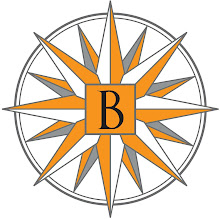Lighthouse and attached keeper's quarters that stood in Cleveland, OH.
The text below and illustration above are from “The Light-Houses of the United States” in Harper's New Monthly Magazine (Vol. 48, Dec. 1873 to May 1874):
Most of our light-houses are on barren, desolate, and exposed points of the coast. In some of them the keepers can not communicate at all with the shore during the winter months, and in such cases supplies of all kinds for the lights and the keepers must be accumulated beforehand. In many freshwater for the keeper and his family has to be caught in cisterns; and there is an official circular to light-keepers, telling them how to avoid the poisonous effect of the water dripping from the leads of the lighthouses by putting powdered chalk into the cistern, and occasionally stirring it. In many places it has been found that cattle, attracted to the light at night, destroyed the strong-rooted grass which holds down sand dunes, and thus exposed the light-house itself to destruction; and in such cases a considerable area of land must be fenced in to exclude these beasts. On stormy nights sea-fowl are apt to dash themselves against the lantern glasses, blinded probably by the glare of the lights, and all light-keepers are specially warned in their printed instructions to be on the watch for such an accident, and extra panes of glass, fixed in frames, are always in readiness in every light-house, to substitute for those which may thus be broken.
In fact, the Light-house Board carries on and provides for an infinite number of details, many of them petty, but none unimportant. It must provide oil for the lamps, and oil butts must be ingeniously contrived so as to exclude air from their contents. It must keep a store of wicks, and of lamp scissors to trim the wicks; it must provide the most durable and economical paint for the iron of the lanterns; it has to send on supplies of food; and for the more complicated lights of the higher orders it has not only to provide expensive machinery, but must also keep on hand delicate yet simple tests by the help of which the light-keeper may be able daily to see that his lamp is set in the exact plane, and his wicks are trimmed precisely high enough. It must provide such seemingly trifling articles as dusting and feather brushes, linen aprons, rouge powder, prepared whiting, spirits of wine, buff or chamois skins, and linen cleaning cloths, and what will appeal to the sensibilities of most country housekeepers, the Light-house Board must keep on hand at each light-house a sufficient supply of glass chimneys for the lamps. No doubt the board possesses the invaluable secret of making chimneys last a long time, and no doubt many an excellent housekeeper who reads this would like to ask Professor Henry [head of the board] what kind of lamp chimneys he has found to be the most lasting and least liable to crack.
There is a printed book of one hundred and fifty-two pages specially devoted to “instructions and directions to light-keepers,” and in this they receive explicit commands not only for their daily duties, but for all possible or imaginable accidents and emergencies. The first article of these instructions announces the fundamental duty of the light-keeper: “The light-house and light-vessel lamps shall be lighted, and the lights exhibited for the benefit of mariners, punctually at sunset daily. Light-house and light-vessel lights are to be kept burning brightly, free from smoke, and at their greatest attainable heights, during each entire night, from sunset to sunrise;” and it is added that “the height of the flame must be frequently measured during each watch at night, by the scale graduated by inches and tenths of an inch, with which keepers are provided.” Finally, “All light-house and light-vessel lights shall be extinguished punctually at sunrise, and every thing put in order for lighting in the evening by ten o’clock A.M. daily.”
It would be tedious and take more space than we have to spare, to give even a bald list of all the tools and materials required in a first-class light-house. A glance over the index of the volume of directions shows that it contains instructions for cleaning, placing, removing, and preserving the lamp chimneys; for cleaning the lamps; for keeping the lantern free from ice and snow; for preserving the whiting, rouge powder, etc.; for using two or three dozen tools; for preserving and economically using the oil, filling the lamp, using the damper; for precautions against fire; “hot to trim the wicks;” and for dozens of other details of the light-keeper’s daily duties.
The keeper is required to enter in a journal (daily) all events of importance occurring in and near his tower, and also to keep a table of the expenditure of oil and other stores. Besides the officer who is district light-house inspector, and who may make his examinations at any time, there are experts called “lampists,” who pass from light to light, making needed repairs, and also taking care that the machinery of the light is in order, and that it is properly attended to by the keepers.






No comments:
Post a Comment